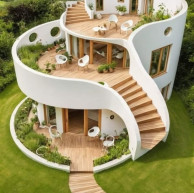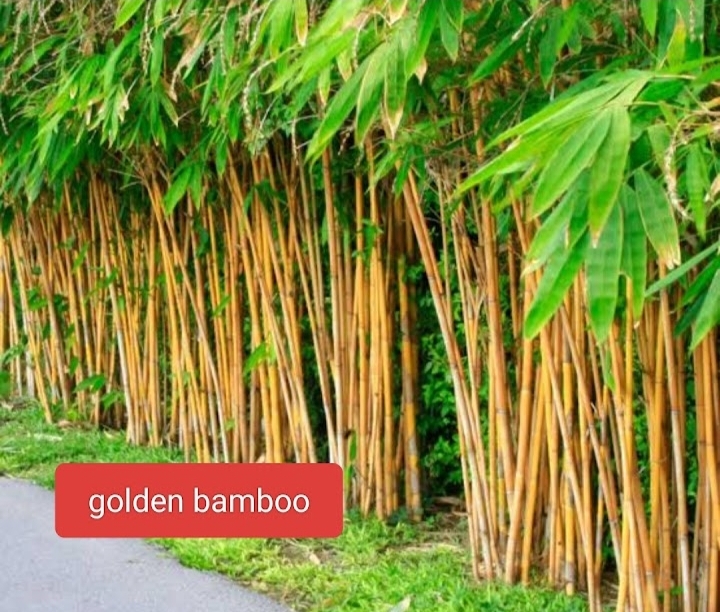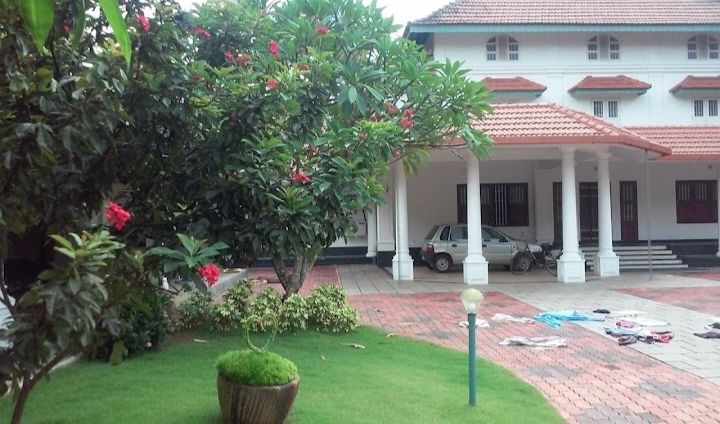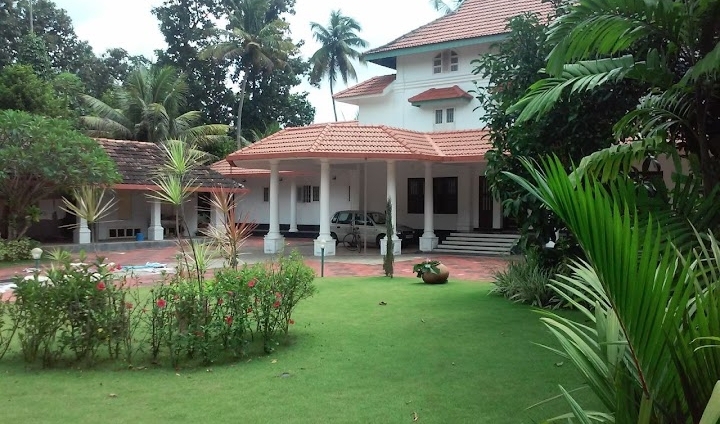Top 10 Football Turf Works in Thrissur
Football Turf Works in Thrissur plays a pivotal role in transforming spaces into professional-grade football fields. Whether it’s for a local sports complex or an individual football ground, the demand for artificial grass and turf solutions has been rapidly increasing in the region. Thrissur, with its love for football and sports activities, is witnessing a rise in professional turfing services, offering everything from installation to maintenance.
Football Turf Works involves the installation, maintenance, and designing of artificial turf for football grounds. These specialized turf solutions are designed to provide a durable, low-maintenance, and high-performance alternative to natural grass. Turfing services for football pitches are widely used in both professional and recreational fields. These turfs offer a consistent playing surface regardless of weather conditions, ensuring the field remains playable all year round.
Football Turf Works typically involve the selection of the right type of synthetic grass, ground preparation, installation, and routine maintenance to ensure the turf’s longevity and optimal playing conditions. Turf solutions are an excellent choice for areas with high foot traffic and those that need to reduce maintenance costs.
Haritha Gardeners
1st Floor Kanjira Archid, Dr. AR Menon Road, Opposite Malabar Eye Hospital, Naikkanal, Thrissur, 680001
Agrisprout Landscape And Garden
Kumbalat House, China Bazar, Near Erattakulam, Medical College, Thrissur, 680596
Greensketches Landscape
Udaya Nagar Road, Near Kerala Institute Of Local Administration (KILA), Athani, Thrissur, 680581
Nila Garden
Mannuthy, Mannuthy Road, Near Mannuthy Agricultural University, Pattikad, Thrissur, 680651
Green Edge Landscaping
Muriyad, Near Muriyad Bus Stop, Parekkaattukara, Thrissur, 680683
Bloomscape Landscape Design Studio
East Fort Junction, Near Bishop's House, Thrissur, 680005
Grassroots Garden Design
West Palace Road, Near Sakthan Thampuran Palace, Thrissur, 680001
Florascape Landscape Services
Chirakkal Lane, Koorkenchery, Thrissur, 680007
Garden World Landscape Designers
Thrissur Road, Peringavu, Thrissur, 680018
Kerala Greenways Landscaping
Chembukkav, Near Kerala Agricultural College, Thrissur, 680020
Football Turf Works in Thrissur
Football Turf Works refers to the specialized field of
designing, installing, and maintaining artificial football turfs. These turfs
are made from synthetic materials designed to mimic the characteristics of
natural grass, offering a durable and low-maintenance alternative to
traditional grass fields. Football turfs are used in various settings,
including professional stadiums, training grounds, and recreational facilities.
The process of creating football turf involves careful planning, precise
installation, and ongoing maintenance to ensure the longevity and optimal
performance of the field.
Football turf works encompass a range of services
related to the creation, installation, and maintenance of artificial football
fields. These fields are specifically designed for playing football and are
constructed using synthetic grass that is designed to replicate the feel and
appearance of natural turf. Artificial football turfs are highly durable,
offering a reliable surface for football players regardless of weather
conditions.
The process of football turf works includes several
phases:
- Design
and Planning: The layout and design of the field, including dimensions,
drainage systems, and other features, are planned in the initial stages.
- Installation:
Once the design is finalized, the turf is laid out and installed on the
field. This involves preparing the ground, laying the turf, and adding
necessary materials like infill to ensure proper support and cushioning.
- Maintenance:
Maintaining football turfs is critical to prolonging their lifespan and
keeping the field safe for players. This involves periodic cleaning,
brushing, infill replacement, and checking for any wear and tear.
- Upgrades:
Over time, turf may require upgrading, whether through replacing worn-out
sections or enhancing the drainage system.
Types of Football Turf in Thrissur
1. 3G Turf (Third-Generation Turf)
3G turf is one of the most popular choices for
football fields worldwide. It is designed to replicate natural grass closely,
providing an ideal playing surface for football. Here are its key features:
- Materials:
Made from high-quality synthetic fibers, 3G turf features a combination of
yarns, usually polyethylene or polypropylene, and is backed with rubber or
sand infill to enhance player comfort and performance.
- Characteristics:
The fibers are designed to mimic the look and feel of natural grass,
providing a more realistic playing surface.
- Applications:
Commonly used in professional football stadiums, training grounds, and
community sports centers.
- Advantages:
Offers superior ball roll and traction, ensuring that footballers
experience a high level of play. The durable materials can withstand heavy
usage, making it ideal for high-traffic areas.
2. 4G Turf (Fourth-Generation Turf)
4G turf is an upgraded version of 3G turf and is
specifically designed for elite or professional-level play. It has additional
features that enhance the playing experience and longevity of the field.
- Materials:
Similar to 3G turf, but with extra layers of infill, often a mixture of
sand and rubber granules, which provide better resilience and stability.
- Characteristics:
It provides better shock absorption and a firmer playing surface, making
it ideal for higher-level competitions and professional athletes.
- Applications:
Typically used in top-tier football leagues, international stadiums, and
training facilities for elite football clubs.
- Advantages:
The turf maintains its structural integrity under intense use, and the
extra infill layers help with improved player comfort and safety, offering
a more professional playing experience.
3. FIFA Approved Turf
FIFA Approved Turf refers to artificial football
fields that meet the stringent standards set by FIFA (Fédération Internationale
de Football Association) for professional play. These turfs are designed to
deliver the highest level of performance and safety.
- Materials:
FIFA-approved turfs are made with premium synthetic fibers such as
polyethylene or polyamide, with a carefully engineered infill material to
maintain the turf's stability and comfort.
- Characteristics:
These turfs undergo rigorous testing for durability, player safety, ball
performance, and drainage, ensuring they meet FIFA’s requirements for
professional football.
- Applications:
Used in FIFA-approved stadiums, training facilities, and international
competitions.
- Advantages:
The highest level of quality and performance, providing consistent ball
behavior, player comfort, and long-lasting durability under any weather
conditions.
4. 5G Turf (Fifth-Generation Turf)
5G turf is an emerging trend in the football turf
industry. It represents the latest advancement in artificial grass technology,
offering superior performance and eco-friendly benefits.
- Materials:
Made with advanced fibers and infill materials that enhance the playing
surface's stability, reduce wear, and offer excellent water drainage.
- Characteristics:
Features innovative tufted yarn technology and is designed to improve the
overall feel of the surface, providing enhanced player safety and
performance.
- Applications:
Though not as widely adopted as 3G and 4G turfs, 5G turf is beginning to
appear in high-end football facilities, especially those focusing on
eco-sustainability and cutting-edge technology.
- Advantages:
Known for improved durability, lower maintenance, better water
permeability, and a longer lifespan compared to previous-generation turfs.
5. Hybrid Turf
Hybrid turf combines elements of natural grass and
synthetic turf to create a more sustainable and environmentally friendly
option. It uses natural grass as the primary surface and incorporates
artificial fibers for added durability.
- Materials:
Natural grass blended with synthetic fibers that are interwoven into the
surface. This blend helps support the natural grass and provides better
wear resistance.
- Characteristics:
Hybrid turfs provide the appearance and feel of real grass while
benefiting from the durability and low maintenance of artificial turf.
They require less irrigation and are environmentally friendly.
- Applications:
Hybrid turfs are commonly used in high-traffic areas where natural grass
might not survive, such as professional football stadiums and
high-performance training grounds.
- Advantages:
Offers the best of both worlds by combining the aesthetic appeal of real
grass with the durability of artificial turf. It also provides a more
sustainable option with reduced environmental impact.
6. Eco-Friendly Turf
Eco-friendly turfs are designed with sustainability in
mind, offering a greener alternative to traditional artificial grass. These
turfs use recyclable materials and focus on minimizing environmental impact.
- Materials:
Made with eco-conscious materials like recycled rubber granules and
bio-based fibers that reduce dependence on petroleum-based products.
- Characteristics:
Designed to meet environmental standards, eco-friendly turfs often use
biodegradable infill and are built to last without harming the
environment.
- Applications:
These turfs are ideal for eco-conscious facilities, schools, parks, and
recreational centers that want to minimize their environmental footprint.
- Advantages:
Reduced environmental impact, increased use of recycled materials, and
fewer harmful chemicals used in the manufacturing process. They are also
durable and low maintenance.
Benefits of Football Turf Works
Football turf works offer numerous advantages over
traditional grass fields, making them an increasingly popular choice for
football facilities. Some of the key benefits include:
- Durability:
Artificial turf is designed to withstand heavy usage, weather conditions,
and wear and tear. It does not get muddy or waterlogged during rainy
conditions, making it ideal for year-round play.
- Low
Maintenance: Unlike natural grass fields, artificial football turfs
require minimal maintenance. There’s no need for mowing, watering, or
fertilizing, significantly reducing upkeep costs.
- Playability:
Football turfs offer consistent playing surfaces, ensuring that players
can enjoy a smooth and predictable game regardless of weather conditions.
- Cost-Effectiveness:
Though the initial cost of installing an artificial football turf may be
higher than natural grass, the long-term savings on maintenance and water
bills make it a cost-effective solution.
- Versatility:
Artificial turf can be used for multiple sports, making it a versatile
option for sports facilities that host various activities.
Installation Process for Football Turf in Thrissur
The installation of football turfs is a detailed
process that requires specialized expertise to ensure the turf performs well
and lasts for many years. Here is an overview of the typical steps involved in
football turf installation:
- Site
Preparation: The ground where the football field
is to be installed is prepared by removing the existing surface and
ensuring that the soil is level.
- Drainage
System: A proper drainage system is
installed to ensure that water does not accumulate on the field,
preventing waterlogging.
- Base
Layer: A base layer of crushed stone or gravel is laid
down to provide stability and support for the turf.
- Laying
the Turf: The artificial grass is rolled out
and securely attached to the base layer. The turf is usually made in rolls
and cut to fit the exact dimensions of the field.
- Infill
Installation: Infill materials such as sand or
rubber granules are added to the surface to support the turf fibers,
improve player comfort, and reduce wear on the fibers.
- Finishing
Touches: The field is groomed, and any seams
or edges are secured to ensure a smooth and seamless surface.
Maintenance of Football Turf
Proper maintenance of football turf is essential to
ensure its longevity, performance, and safety. While artificial turf requires
less upkeep than natural grass, it still needs regular care to maintain its
quality and function. Here’s a detailed guide on the key aspects of football
turf maintenance.
1. Regular Brushing and Brooming
One of the most important tasks in maintaining
football turf is regular brushing. Over time, the turf fibers can become
flattened due to heavy use, and the infill (rubber or sand) can shift and
settle unevenly. Brushing helps restore the fibers to an upright position,
improving the turf’s appearance and ensuring proper drainage.
- Frequency:
Brushing should be done weekly or bi-weekly, depending on the level of
use.
- Equipment:
Use specialized turf brushes or broom attachments that are designed to
agitate the fibers without causing damage.
- Benefits:
Regular brushing maintains the aesthetic quality of the turf, enhances
player performance, and helps the infill stay evenly distributed across
the surface.
2. Infill Maintenance
Infill is a critical component of artificial football
turf, providing cushioning and stability to the fibers. Over time, infill
material can migrate, shift, or deplete, requiring replenishment to maintain
the turf’s performance.
- Frequency:
Inspect the turf regularly for signs of infill depletion or unevenness,
especially after intense use or heavy rainfall.
- Types
of Infill: Depending on the type of turf, infill materials may include
rubber granules, sand, or a combination. Ensure the correct type is used
for your specific turf.
- Benefits:
Proper infill maintenance prevents the turf from becoming too hard or
soft, ensuring player safety and optimizing the ball roll.
3. Deep Cleaning and Power Sweeping
Regular deep cleaning and power sweeping are necessary
to keep the turf free of debris, dirt, and organic material like leaves, twigs,
or trash. These materials can accumulate and cause drainage issues, mold, or
bacteria growth if not properly cleared.
- Frequency:
Power sweeping should be done monthly or as needed, depending on the
environment and the amount of foot traffic the turf receives.
- Procedure:
Use a commercial-grade power sweeper that can effectively remove debris
from the surface without damaging the turf. For deep cleaning, a
specialized turf cleaning machine or washing system can be used.
- Benefits:
Deep cleaning maintains optimal drainage, reduces bacteria build-up, and
ensures the turf remains safe and attractive for players.
4. Weed and Moss Control
Though artificial turf reduces the growth of weeds and
moss, it doesn’t eliminate it entirely. Weeds and moss can sprout in the infill
or along the edges of the turf, which can lead to uneven surfaces or affect
performance.
- Frequency:
Inspect the turf for weeds or moss every few weeks, especially during the
growing season.
- Treatment:
Use a weed killer or moss treatment specifically designed for artificial
turf. Avoid using harsh chemicals that could damage the turf fibers or
infill.
- Benefits:
Effective weed and moss control ensures the turf remains even and
functional, preventing unwanted vegetation that could affect the playing
surface.
5. Drainage System Maintenance
Good drainage is essential for maintaining the quality
of football turf, especially in areas that experience heavy rainfall. Over
time, debris, dirt, and sand can clog the turf’s drainage system, leading to
water pooling and potential damage to the surface.
- Frequency:
Drainage systems should be checked at least once a year to ensure they are
functioning correctly.
- Procedure:
Inspect the drainage pipes and areas under the turf for blockages. If any
issues are found, clear the debris or consult a professional to repair the
drainage system.
- Benefits:
Proper drainage prevents water accumulation, which can cause uneven
surfaces, slipping hazards, and bacteria growth.
6. Edge Maintenance
The edges of the turf are particularly susceptible to
wear and damage, especially in high-traffic areas like the sidelines and
goalposts. Regular edge maintenance ensures the turf remains securely attached
to its base and prevents the edges from lifting or fraying.
- Frequency:
Inspect the edges monthly and repair any signs of lifting or damage.
- Procedure:
Re-secure loose edges using specialized adhesive or seaming tape. In some
cases, a professional may need to re-turf or reseam the edges if damage is
significant.
- Benefits:
Proper edge maintenance keeps the turf looking neat and prevents wear from
extending into the surrounding areas.
7. UV Protection and Color Restoration
Artificial turf can fade over time, particularly if it
is exposed to intense sunlight for long periods. UV rays can degrade the
fibers, leading to discoloration and reduced durability. To protect your turf
from sun damage and keep it looking vibrant, UV protection and color
restoration may be required.
- Frequency:
UV protection is generally applied when the turf is first installed, but
color restoration treatments can be done every 1-2 years.
- Procedure:
Apply UV protection coatings or sprays designed for artificial turf to
reduce sun damage. Color restoration can be achieved through specific
treatments designed for synthetic grass.
- Benefits:
UV protection and color restoration help the turf maintain its appearance
and extend its lifespan.
8. Inspection and Repairs
Regular inspections of the football turf are necessary
to identify any areas of wear and tear, such as tears, rips, or fiber damage.
Prompt repairs are essential to avoid further damage and maintain the turf’s
performance.
- Frequency:
Perform regular inspections after every heavy use or at least once every
few months.
- Procedure:
Small tears can be repaired with turf glue or stitching, while larger
damages may require patching or re-turfing. Always use materials that
match the existing turf to ensure a seamless repair.
- Benefits:
Timely repairs prevent more significant issues down the road, saving on
costs and ensuring the field remains safe and playable.
9. Avoid Heavy Equipment or Sharp Objects
While artificial turf is designed to withstand heavy
foot traffic, it is still vulnerable to damage from heavy equipment or sharp
objects. Avoid using heavy machinery or dragging equipment across the turf to
prevent damage to the fibers.
- Frequency:
Always avoid placing heavy equipment on the turf.
- Procedure:
If heavy machinery must be used near the turf, ensure it is carefully
positioned and that it does not come into direct contact with the surface.
- Benefits:
Preventing damage from heavy equipment ensures the turf remains intact and
prolongs its lifespan.
Frequently Asked Questions About Football Turf Works in Thrissur
1. What is football turf?
Football turf is an artificial surface made from
synthetic fibers designed to resemble natural grass. It is used for football
fields to provide a durable and low-maintenance playing surface.
2. How long does football turf last?
Football turfs typically last between 8 to 12 years,
depending on the quality of the turf, the frequency of use, and the maintenance
performed. Regular maintenance can extend the lifespan of the turf.
3. Can football turf be used in all
weather conditions?
Yes, artificial football turfs are designed to
withstand various weather conditions. They do not get muddy or waterlogged like
natural grass, making them suitable for year-round play in all weather.
4. How much does it cost to install
football turf?
The cost of installing football turf varies depending
on factors such as the size of the field, the type of turf selected, and the
location. On average, installation costs can range from $30,000 to $60,000 or
more for a full-sized football field.
5. Is football turf maintenance expensive?
While the initial installation cost of artificial turf
can be high, the ongoing maintenance costs are relatively low compared to
natural grass fields. The turf requires occasional cleaning, brushing, and
infill replacement.
6. Can football turf be used for other
sports?
Yes, artificial football turfs are versatile and can
be used for a variety of sports, including soccer, rugby, field hockey, and
even tennis. This makes them ideal for multi-sport facilities.
7. How do I maintain my football turf?
Regular maintenance tasks include cleaning the turf,
brushing the fibers to keep them upright, and topping up or replacing the
infill materials. Periodic inspections and repairs are also essential to ensure
the turf remains in good condition.
8. Is football turf safe for players?
Yes, football turfs are designed with player safety in
mind. The infill materials provide cushioning to reduce the risk of injuries,
and the consistent surface ensures predictable play. However, proper
maintenance is essential to maintain safety standards.
9. Can football turf be installed indoors?
Yes, football turf can be installed indoors,
especially in sports complexes or training facilities. Indoor turf offers a
controlled environment that is not subject to weather conditions.
10. How do I choose the right football
turf for my facility?
Choosing the right turf depends on several factors,
including budget, level of play (professional or recreational), weather
conditions, and maintenance requirements. Consulting with a turf installation
expert can help you select the best option for your needs.









